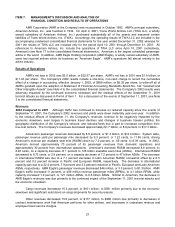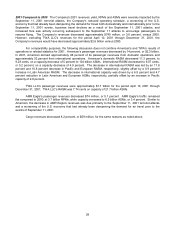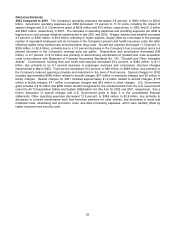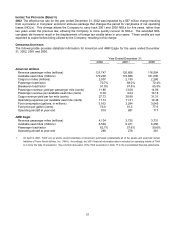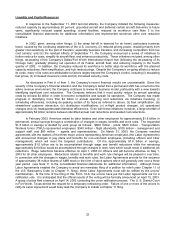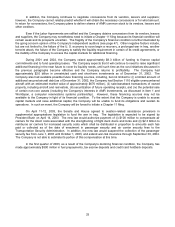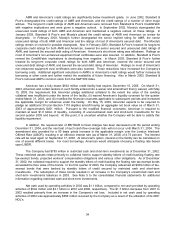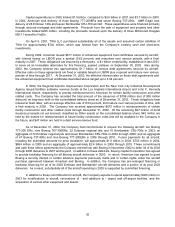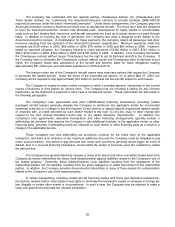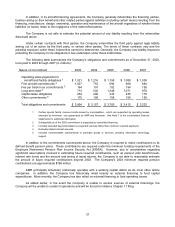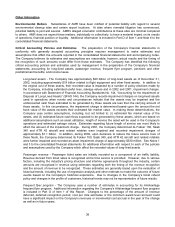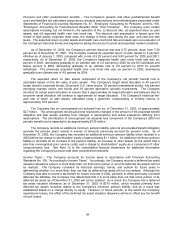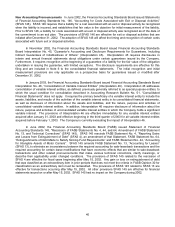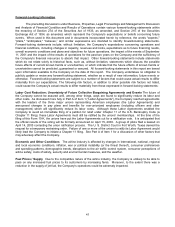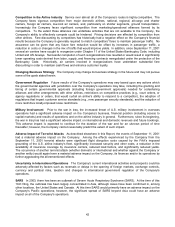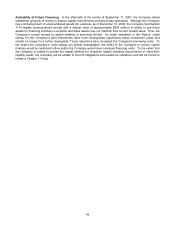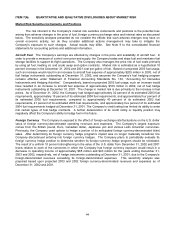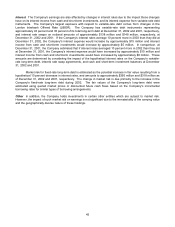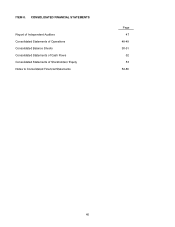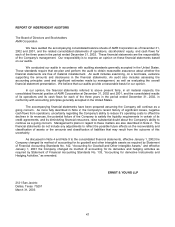American Airlines 2002 Annual Report Download - page 39
Download and view the complete annual report
Please find page 39 of the 2002 American Airlines annual report below. You can navigate through the pages in the report by either clicking on the pages listed below, or by using the keyword search tool below to find specific information within the annual report.
37
In addition, in its aircraft financing agreements, the Company generally indemnifies the financing parties,
trustees acting on their behalf and other related parties against liabilities (including certain taxes) resulting from the
financing, manufacture, design, ownership, operation and maintenance of the aircraft regardless of whether these
liabilities (or taxes) relate to the negligence of the indemnified parties.
The Company is not able to estimate the potential amount of any liability resulting from the indemnities
discussed above.
Under certain contracts with third parties, the Company indemnifies the third party against legal liability
arising out of an action by the third party, or certain other parties. The terms of these contracts vary and the
potential exposure under these indemnities cannot be determined. Generally, the Company has liability insurance
protecting the Company for its obligations it has undertaken under these indemnities.
The following table summarizes the Company’s obligations and commitments as of December 31, 2002,
to be paid in 2003 through 2007 (in millions):
Nature of commitment 2003 2004 2005 2006 2007
Operating lease payments for
aircraft and facility obligations 1$ 1,521 $ 1,216 $ 1,158 $ 1,089 $ 1,038
Firm aircraft commitments 21,027 753 694 668 684
Fee per block hour commitments 3164 191 192 194 195
Long-term debt 4713 540 1,348 1,071 978
Capital lease obligations 254 299 233 235 179
Other commitments 5175 158 158 158 158
Total obligations and commitments $ 3,854 $ 3,157 $ 3,783 $ 3,415 $ 3,232
1 Certain special facility revenue bonds issued by municipalities - which are supported by operating leases
executed by American - are guaranteed by AMR and American. See Note 7 to the consolidated financial
statements for additional information.
2 Substantially all of the 2003 commitment is supported by committed financing.
3 Includes expected payments based on projected volumes rather than minimum required payments.
4 Excludes related interest amounts.
5 Includes noncancelable commitments to purchase goods or services, primarily information technology
support.
In addition to the commitments summarized above, the Company is required to make contributions to its
defined benefit pension plans. These contributions are required under the minimum funding requirements of the
Employee Retirement Pension Plan Income Security Act (ERISA). However, due to uncertainties regarding
significant assumptions involved in estimating future required contributions, such as pension plan benefit levels,
interest rate levels and the amount and timing of asset returns, the Company is not able to reasonably estimate
the amount of future required contributions beyond 2003. The Company’s 2003 minimum required pension
contributions are approximately $186 million.
AMR (principally American) historically operates with a working capital deficit as do most other airline
companies. In addition, the Company has historically relied heavily on external financing to fund capital
expenditures. More recently, the Company has also relied on external financing to fund operating losses.
As stated earlier, in the event the Company is unable to access sources of external financings, the
Company will be unable to sustain it operations and will be forced to initiate a Chapter 11 filing.


